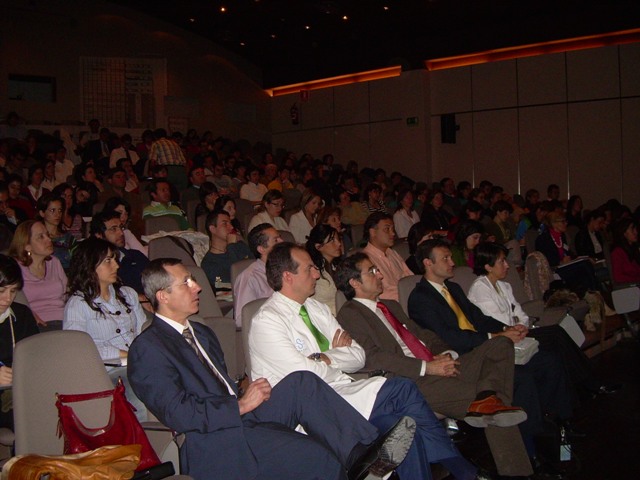| Revisión Mascarilla laríngea Dr. García |
Página 4 de 4 8. CONCLUSIONES:La ML en pediatría supone una herramienta muy eficaz en el control de la vía aérea de los niños para procedimientos anestésico-quirúrgicos de corta duración en ventilación espontánea, donde no está justificado el empleo de la intubación traqueal. Otra gran ayuda que la ML ofrece al anestesiólogo pediátrico, se produce cuando hay que anestesiar a niños con infección respiratoria de vía alta leve o en vía de resolución, en los que la intubación traqueal está asociada con mayor morbilidad y complicaciones de vía aérea. Para la ventilación mecánica con ML es recomendable el empleo de modalidades que produzcan las menores presiones necesarias para una correcta ventilación, y en este sentido el flujo continuo y las modalidades de asistencia o soporte por presión y sincronizadas producen mejores resultados que la ventilación a presión positiva intermitente. La ML “Proseal” consigue un mejor sello que la ML clásica sobre todo con los números 1,5 y 2 por lo que es recomendable el empleo de la ML “Proseal” frente a la clásica, para pacientes entre 5 y 20 kilos, especialmente para ventilación mecánica controlada. Persiste el problema asociado a la insuflación gástrica con la ML clásica del nº 1 para niños menores de 5 kilos, que esperemos que se mejore con la comercialización de la ML “Proseal” del número 1. Si quieres descargarte este artículo accede a zona de descargas previo registro
BIBLIOGRAFÍA
(1) Brain AI. The laryngeal mask--a new concept in airway management. Br J Anaesth 1983; 55: 801-805. (2) Jones JR. Laryngeal mask airway: an alternative for the difficult airway. AANA J 1995; 63: 444-449. (3) Park C, Bahk JH, Ahn WS, Do SH, Lee KH. The laryngeal mask airway in infants and children. Can J Anaesth 2001; 48: 413-417. (4) Patterson MD. Resuscitation update for the pediatrician. Pediatr Clin North Am 1999; 46: 1285-1303. (5) Asai T, Morris S. Elective use of the laryngeal mask in patients with difficult airways. Can J Anaesth 1993; 40: 1221-1222. (6) Benumof JL. Laryngeal mask airway and the ASA difficult airway algorithm. Anesthesiology 1996; 84: 686-699. (7) Fukushima Y, Yorozu T, Satoh M, Eguchi H, Shigematsu T. [Pediatric fiberoptic bronchoscopy via the laryngeal mask airway]. Masui 1996; 45: 1519-1524. (8) Kiper N, Ocal T, Ozcelik U, Anadol D, Gocmen A, Aypar O. Fiberoptic flexible bronchoscopy via the laryngeal mask airway in children. Turk J Pediatr 43: 197-199. (9) Lesmes C, Siplovich L, Katz Y. Fiberoptic bronchoscopy in children using the laryngeal mask airway. Pediatr Surg Int 2000; 16: 179-181. (10) Nussbaum E, Zagnoev M. Pediatric fiberoptic bronchoscopy with a laryngeal mask airway. Chest 2001; 120: 614-616. (11) Brambrink AM, Meyer RR, Kretz FJ. Management of pediatric airway--anatomy, physiology and new developments in clinical practice. Anaesthesiol Reanim 2003; 28: 144-151. (12) Epstein RH, Ferouz F, Jenkins MA. Airway sealing pressures of the laryngeal mask airway in pediatric patients. J Clin Anesth 1996; 8: 93-98.(13) Lopez G, Brimacombe J, Cebrian J, Arranz J. Laryngeal mask airway in pediatric practice: a prospective study of skill acquisition by anesthesia residents. Anesthesiology 1996; 84: 807-811. (14) Lopez G, Brimacombe J, Alvarez M. Safety and efficacy of the laryngeal mask airway. A prospective survey of 1400 children. Anaesthesia 1996; 51: 969-972. (15) Lopez G, Brimacombe J, Brain AI, Wenck DJ, Wilkins HA. Double-lumen laryngeal mask airway. Anesthesiology 1996; 84: 1263-1264. (16) Lopez G, Brimacombe J, Clar B. Sevoflurane versus propofol for induction and maintenance of anaesthesia with the laryngeal mask airway in children. Paediatr Anaesth 1999; 9: 485-490. (17) Infosino A. Pediatric upper airway and congenital anomalies. Anesthesiol Clin North America 2002; 20: 747-766. (18) Villani A, Appierto L. COPA, LMA, tracheal intubation. What are the indications in pediatric anesthesia. Minerva Anestesiol 1999; 65: 60-64. (19) Frediani M, Blanchini G, Capanna M, Casini L, Costa M, Uggeri S et al. The laryngeal mask in pediatric anesthesia. Minerva Anestesiol 1996; 62: 65-71. (20) Lopez G, Cebrian P, Gonzalez Z, Mateos A, Blanco S, Navia R. Utilización de la mascarilla laríngea en anestesia pediátrica. Rev Esp Anestesiol Reanim 1995; 42: 332-335. (21) Devys JM, Balleau C, Jayr C, Bourgain JL. Biting the laryngeal mask: an unusual cause of negative pressure pulmonary edema. Can J Anaesth 2000; 47: 176-178. (22) Ismail Z, Vanner RG. Regurgitation and aspiration of gastric contents in a child during general anaesthesia using the laryngeal mask airway. Paediatr Anaesth 1996; 6: 325-328. (23) Samarkandi AH, Ali MS, Elgammal M, Bakhamees HS. Airway protection by the laryngeal mask airway in children. Middle East J Anesthesiol 1995; 13: 107-113. (24) Shulman GB, Connelly NR. Bilateral pneumothoraces in a pediatric patient undergoing Hickman catheter placement. Anesth Analg 2002; 95: 1251-2.( 25) Nagai S, Inagaki Y, Harada T, Watanabe T, Hirosawa J, Ishibe Y. [A modified technique for insertion of the laryngeal mask airway in children]. Masui 2000; 49: 1367-1370 |
||||||




